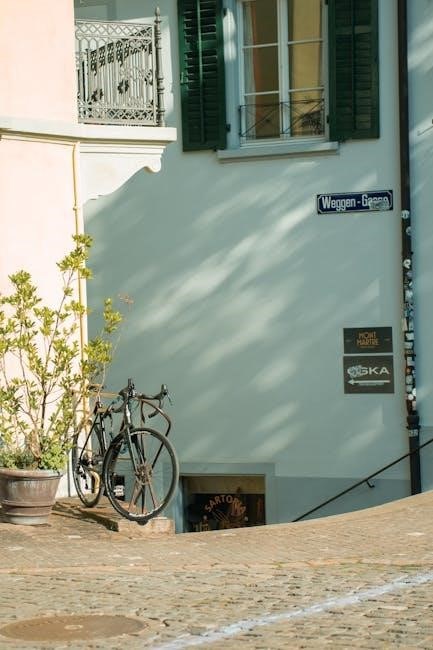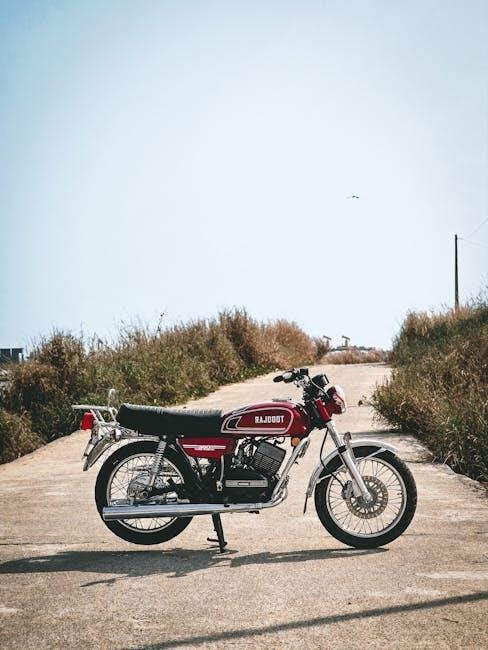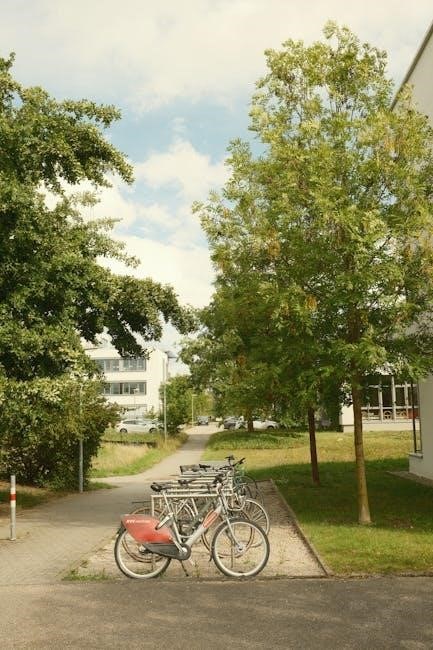Buying a bike can be an exciting yet overwhelming experience‚ especially with the numerous options available today. Whether you’re a seasoned cyclist or a first-time buyer‚ the process of selecting the right bike requires careful consideration. The first step is to understand that bicycles come in various types‚ each designed for specific purposes‚ such as road cycling‚ mountain biking‚ commuting‚ or leisurely rides.
Before diving into the details‚ it’s essential to recognize that the right bike for you will depend on your riding style‚ budget‚ and personal preferences. For instance‚ a road bike is ideal for speed and paved surfaces‚ while a mountain bike is built for rugged terrain. Hybrid bikes‚ on the other hand‚ offer a versatile option for both on-road and off-road adventures.
Setting a budget is another critical factor. Bikes can range from affordable options under $500 to high-end models costing several thousand dollars. Additionally‚ you’ll need to consider whether buying new or used is the better choice for you. Used bikes can offer significant savings‚ but new bikes often come with warranties and the latest features.

When you’re ready to make a purchase‚ visiting a local bike shop is highly recommended. Professionals can help you find the right size‚ discuss your needs‚ and even allow test rides. This hands-on approach ensures a better fit and a more enjoyable riding experience. Remember‚ buying a bike is not just about the bike itself but also about accessories‚ maintenance‚ and ensuring it aligns with your lifestyle.
With so many resources available‚ from guides to expert advice‚ you’re never alone in the process. Take your time‚ do your research‚ and enjoy the journey of finding the perfect bike for your next adventure!

Determining Your Needs
Determining your needs is the cornerstone of buying the right bike. With so many types of bikes available‚ it’s essential to narrow down your requirements to find a bike that aligns perfectly with your lifestyle‚ preferences‚ and riding goals. Whether you’re commuting to work‚ hitting the trails‚ or simply enjoying leisurely rides‚ understanding your needs will guide you toward the perfect purchase. Let’s explore the key factors to consider when determining your needs;
2.1 Understanding Your Riding Style

Your riding style is the first thing to consider when determining your needs. Ask yourself: Where will you be riding most of the time? How often do you plan to ride? And what type of terrain will you encounter? These questions will help you identify the type of bike that suits your riding style.

- Leisurely Rides: If you plan to ride occasionally on flat‚ paved paths or around your neighborhood‚ a hybrid or cruiser bike might be the best choice. These bikes are designed for comfort and ease of use‚ making them perfect for casual riders.
- Commuting: If you’ll be using your bike for daily commutes‚ consider a commuter or urban bike. These bikes are built for efficiency and often feature practical accessories like racks‚ fenders‚ and lights to handle the demands of city riding.
- Off-Road Adventures: For those who love exploring trails‚ a mountain bike is the way to go. Mountain bikes are designed to handle rough terrain‚ with features like suspension systems and wide‚ knobby tires for better grip and control.
- Long-Distance Riding: If you’re into road biking or touring‚ a road bike or gravel bike is ideal. These bikes are lightweight‚ aerodynamic‚ and built for speed and endurance‚ making them perfect for long rides on paved or mixed surfaces.
2.2 Assessing Your Fitness Goals
Your fitness goals can also play a significant role in determining your needs. If you’re looking to improve your physical fitness‚ you might prefer a bike that challenges you and helps you stay motivated. On the other hand‚ if you’re looking for a more relaxed experience‚ a bike with a comfortable design would be a better fit.

For example‚ if you’re training for a triathlon or a long-distance cycling event‚ a road bike with a focus on speed and performance would be ideal. However‚ if you’re looking to incorporate cycling into your routine for overall health and wellness‚ a hybrid or electric bike might be more suitable. Electric bikes‚ in particular‚ are great for those who want to enjoy the benefits of cycling without the strain of intense physical exertion.

2.3 Considering Your Budget
Your budget is another crucial factor in determining your needs. Bikes can range in price from a few hundred dollars to several thousand‚ depending on the type‚ brand‚ and features. It’s important to set a realistic budget and stick to it to avoid overspending.
When setting your budget‚ consider not only the cost of the bike but also any additional accessories you might need‚ such as a helmet‚ lock‚ or cycling gear. Many bike shops offer package deals that include these accessories‚ which can be a cost-effective option. Additionally‚ consider the long-term costs of maintaining and repairing your bike‚ as some types of bikes may require more frequent or expensive upkeep.
2.4 Thinking About the Terrain
The terrain you’ll be riding on is another important consideration. Different types of bikes are designed to handle specific types of terrain‚ and choosing the wrong bike for your terrain can lead to a poor riding experience or even damage to the bike.
- Paved Roads: Road bikes and hybrid bikes are ideal for paved roads. They are lightweight‚ efficient‚ and designed for speed and comfort on smooth surfaces.
- Gravel or Dirt Paths: Gravel bikes or hardtail mountain bikes are great for mixed terrain. They offer a balance of speed and durability‚ making them perfect for riders who want to explore both paved and unpaved paths.
- Mountainous or Rough Terrain: Full-suspension mountain bikes are designed for challenging off-road conditions. They feature suspension systems that absorb shocks‚ providing better control and comfort on rough trails.
- Urban Environments: Urban or commuter bikes are built for the demands of city riding. They often feature durable frames‚ robust wheels‚ and practical accessories like fenders and racks.
2.5 Evaluating the Frequency of Use

The frequency of use can also influence your decision. If you plan to ride your bike every day‚ you’ll want a bike that is durable and low-maintenance. On the other hand‚ if you’ll only be riding occasionally‚ you might prioritize cost and convenience over high-end features.
For frequent riders‚ investing in a high-quality bike with reliable components is worth the extra cost. However‚ for occasional riders‚ a more affordable option might be sufficient. Additionally‚ consider storage and transportation needs. If you live in a small apartment or plan to travel with your bike‚ a folding bike or a compact model might be a practical choice.
2.6 Considering Additional Features

Finally‚ think about any additional features that might be important to you. For example‚ if you plan to carry groceries or commute to work‚ a bike with a rack or panniers might be useful. If you’ll be riding in low-light conditions‚ consider a bike with built-in lights or reflectors.

Other features to consider include the type of brakes‚ the number of gears‚ and the comfort of the saddle. For example‚ disc brakes provide better stopping power in wet conditions‚ making them a good choice for commuters. A bike with a wide range of gears is ideal for hilly terrain‚ while a single-speed bike is perfect for flat‚ smooth roads.



0 Comments